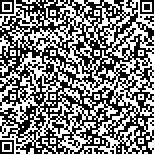| 引用本文: | 魏冬凯,南蓬,徐康萍,裘锋.基于微量DNA样本的简化甲基化文库构建方法研究[J].生物信息学,2017,15(1):33-45. |
| WEI Dongkai,NAN Peng,XU Kangping,QIU Feng.An μLtra-low-input RRBS (Reduced Representation Bisulfite Sequencing) library preparation method[J].Chinese Journal of Bioinformatics,2017,15(1):33-45. |
|
| |
|
|
| 本文已被:浏览 2965次 下载 2446次 |

码上扫一扫! |
|
|
| 基于微量DNA样本的简化甲基化文库构建方法研究 |
|
魏冬凯1,2,南蓬2,徐康萍1,裘锋1,3
|
|
(1. 苏州贝斯派生物科技有限公司 江苏 苏州 215123;2. 复旦大学生命科学学院 上海 200438;3.上海生物信息技术研究中心 上海 201203)
|
|
| 摘要: |
| RRBS(简化甲基化测序)是一种有效研究DNA甲基化状态的测序方案。文库构建是该方案中最关键的实验步骤之一,RRBS文库构建往往因为酶切产物少,文库构建步骤繁多等因素,导致DNA起始量需要1 ug以上。然而很多来源于人的样本,如冰冻组织穿刺、石蜡切片、显微微切割等,都往往只能获得100 ng以下的DNA,无法满足常规RRBS文库构建的起始DNA总量要求,从而大大限制RRBS技术的应用范围。本研究主要探讨并设计了基于微量DNA样本(<100 ng)的RRBS文库构建策略,主要通过优化MspI酶切条件、DNA片段大小筛选、缩减反应步骤及减少DNA转移次数等技术手段,大大提高了DNA回收率,进而建立了2种有效使用微量DNA样品的RRBS文库构建方案(即EA-Method和WB-Method方案)。EA-Method方案在处理100 ng左右的DNA时,有经济、快速、高效的特点,但文库质量略差于WB-Method方案;WB-Method方案可将DNA起始量降低至10 ng,并且文库质量高。为验证WB-Method方法的可靠性,研究人员选取了3种志愿者样本(全血和口拭子),采用WB-Method同时进行常量和微量RRBS文库构建,并进行Illumina Hiseq平台测序,数据通过生物信息分析得到微量RRBS检测的CpG,CHG,CHH中C碱基的甲基化比例与常量RRBS结果一致。同时,该方法可以大大降低DNA损耗及损伤,因而该方法可将RRBS技术应用到更广泛的样本类型中去,有效拓展RRBS的研究领域。 |
| 关键词: 二代测序 RRBS 简化甲基化 EA-M WB-M |
| DOI:10.3969/j.issn.1672-5565.2017.01.201609001 |
| 分类号:Q78 |
| 文献标识码:A |
| 基金项目: |
|
| An μLtra-low-input RRBS (Reduced Representation Bisulfite Sequencing) library preparation method |
|
WEI Dongkai1,2, NAN Peng2, XU Kangping1, QIU Feng1,3
|
|
(1. BasePair Bio-Technology Co.Ltd, JiangSu Suzhou 215123, China;2.School of Life Sciences Fudan University, Shanghai 200438, China;3. Shanghai center for Bioinformation technology, Shanghai 201203, China)
|
| Abstract: |
| RRBS (Reduced Representation Bisulfite Sequencing) is an effective method for DNA methylation study. Library preparation is one of the most critical steps of RRBS experiments. In conventional RRBS library preparation, it usually needs 1 ug or more starting DNA because of less enzyme digested products and losses in various experiment steps. Meanwhile, many clinical samples from patients, such as frozen puncture tissue, FFPE, microdissection, etc., there is only a limited amount of extracted DNA less than 100 ng, and they dont fit the requirement of the conventional RRBS library preparation, which greatly limits the application field of RRBS technology. This research studies and designs RRBS library preparation using μLtra-low-input DNA samples (<100 ng), mainly by optimizing MspI digestion condition, DNA fragment size selection, reduction of reaction steps and DNA transfer steps in library preparation, which greatly improve the DNA recovery. We set up two effective μLtra-low-input RRBS library preparation methods (EA-Method and WB-Method). The EA-Method is more cost effective, fast, and efficient than WB-Method when DNA input amount around 100 ng, but the library quality is slightly lower than the WB-Method; The WB-Method has higher quality performance when using 10 ng DNA. In order to test the reliability, we construct 3 groups of RRBS libraries (1ug DNA input and 10ng DNA input) from three volunteer samples (whole blood and mouth swab) by WB-Method. The prepared libraries are sequenced on Illumina Hiseq platform. The compatible resμLts are obtained comparing the μLtra-low-input and conventional RRBS method by analysis of detected C bases in the CpG, CHG, CHH methylation rate. Nevertheless, the μLtra-low-input RRBS method can greatly reduce DNA loss and damage during library preparation, and it will be a wider application of RRBS technology to different type samples and promote broader research field of RRBS technology effectively. |
| Key words: NGS RRBS Reduced Representation Bisulfite Sequencing EA-M WB-M |
|
|
|
|






